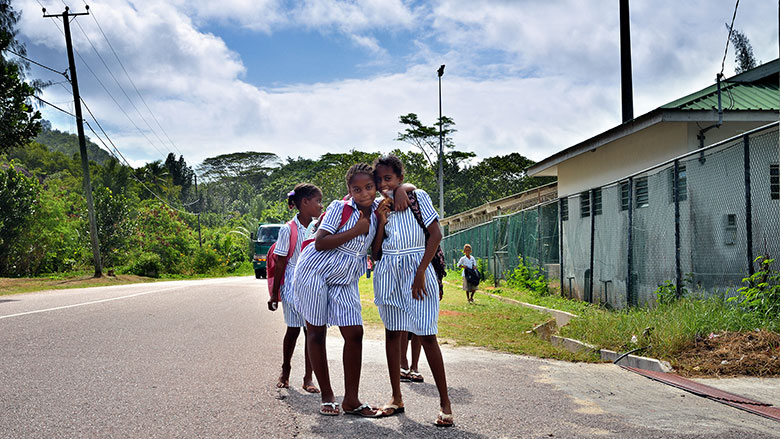VICTORIA, August 2, 2017 — How can Seychelles maintain its strong economic performance while ensuring that the benefits of growth are shared, and that the gains are environmentally sustainable and resilient to future shocks? These big questions are tackled by the Systematic Country Diagnostic (SCD), a World Bank report for the Seychelles.
The SCD seeks to identify the Seychelles’ most critical development priorities and highlight gaps in knowledge where more evidence and work are needed to inform policy. It finds that Seychelles’ development challenges can be summarized as “the 3 Ps”: Productivity, Participation, and Performance.
First, Productivity.
Seychelles’ economy has been growing robustly, but this growth has been powered by the heavy use of foreign investment and expatriate labor. Seychelles could, therefore, benefit from placing more emphasis on boosting the efficiency with which it uses its existing resources—that is, by achieving more productivity-led growth.
Productivity can be unleashed in many ways, from encouraging more innovation in key areas of the economy, such as tourism, to continuing to place emphasis on micro-, small, and medium enterprise development across all sectors.
Since 2015, the Seychelles has been classified as a High Income Economy by the World Bank (the only one in Africa). It is time for it to start growing like one, based on the never-ending increases in productivity that come through the competitive pressures of the market to do more with less, and from technological adoption and innovation.
Second, Participation.
Seychelles already enjoys high labor force participation and employment rates. But globally the labor market is increasingly rewarding workers with job-relevant skills (such as hard-to-get technical and vocational skills, advanced skills, and so-called “soft” skills like the communications and people skills demanded in management and sales roles). The pressure is on for the Seychelles’ education system to equip graduates with the tools they need to reap the benefits of the growing opportunities offered by the country’s increasingly sophisticated economy.
Social spending is already at generous levels, but it needs to be better targeted to shore up its sustainability, boost its impact for protecting the vulnerable, and empower Seychellois to get high quality jobs.
Third, Performance.
A high-performing economy, one which offers opportunities for all to participate while protecting the vulnerable and providing a safety net in hard times, cannot be achieved in a vacuum. It requires a public sector that is efficient enough to deliver high quality public services (such as education and healthcare), agile enough to respond to and anticipate emerging priorities, and small enough not to divert scarce financial and human resources away from the private sector, which is responsible for generating the bulk of employment and income.
Seychelles has made much progress on this front in the reformist period following the 2008 global financial crisis, and it can build on this further to position government and its state-owned enterprises to support a high-performing, high-participation economy.
Through the lens of the 3Ps, the World Bank identifies five top priority areas for Seychelles to make even more progress in achieving shared prosperity. They are: (1) to strengthen the private sector enabling environment, (2) to maintain the focus on macroeconomic and fiscal policy stability, (3) to further increase public spending efficiency, (4) to strengthen education and skills development, and (5) to streamline and use more strategically its social assistance spending.
Of course, and as covered in the report, there are many other priorities too, such as tackling the quality and price of credit and energy, reducing labor market rigidities, enhancing healthcare, and confronting the substantial challenge posed by the inevitability of external economic shocks and by climate change.
Reasonable people can, and no doubt will, disagree on how best to describe and rank the many challenges faced by Seychelles. Our hope is that the SCD offers one useful perspective, contributing to the national debate, and that it can also be used as one input to the new national development planning process that has been launched.
As Seychelles takes stock of its developmental success to date, and plans to elevate this even further, the SCD also identifies how much the country stands to benefit from investing more in gathering data and using it to inform debate and public policies.
Perhaps to the 3Ps we could add 2Ds: Data and Digitization.

